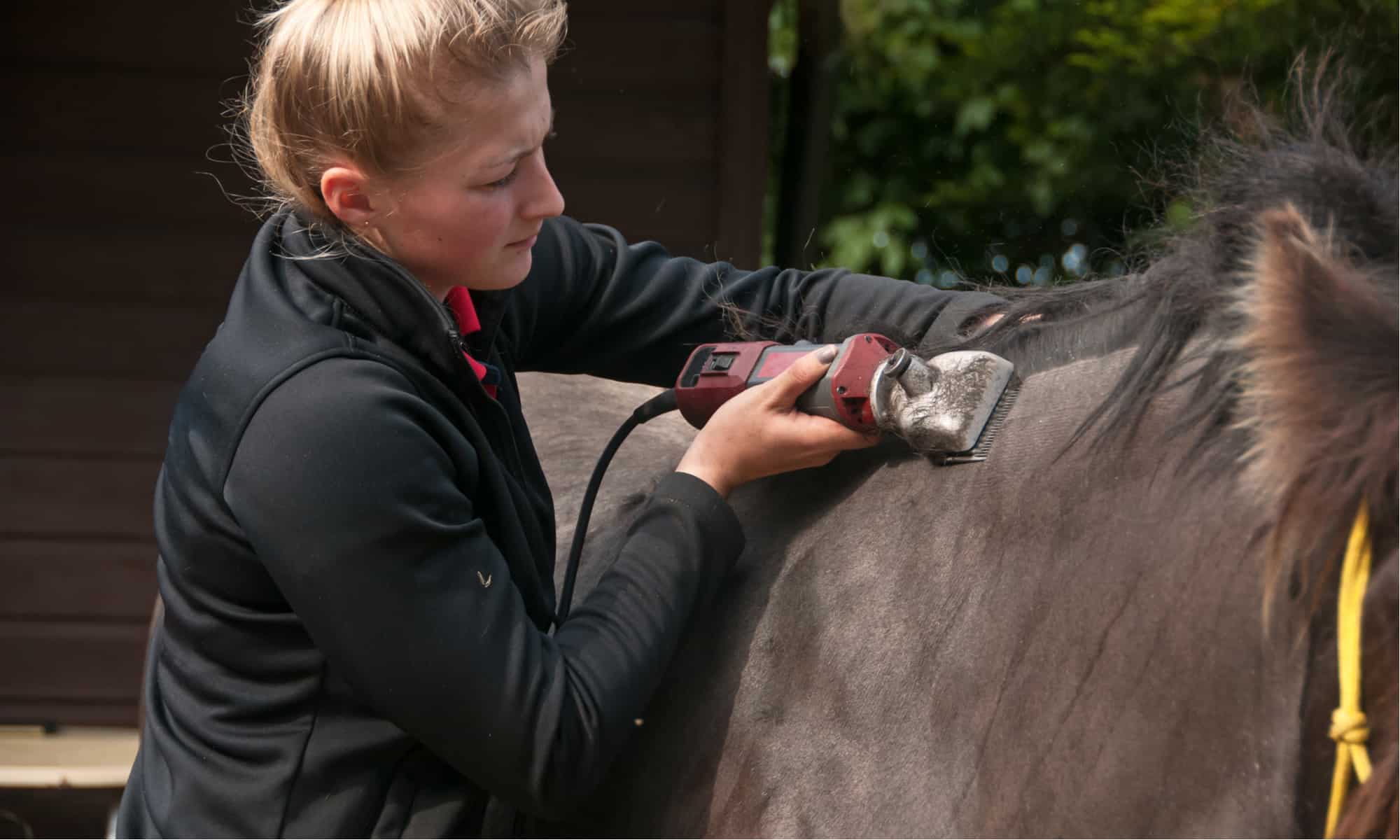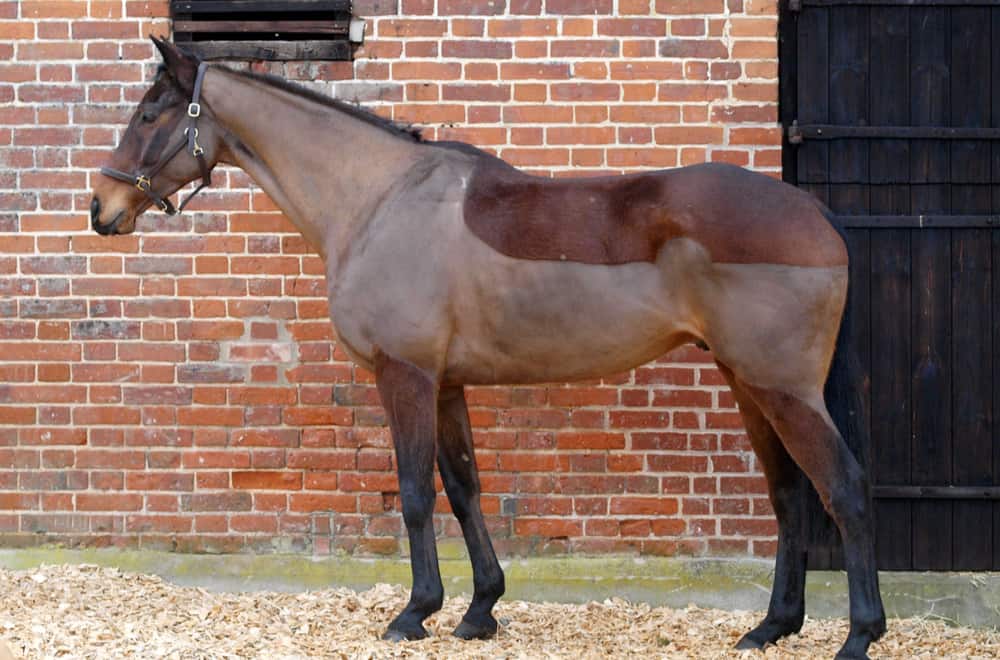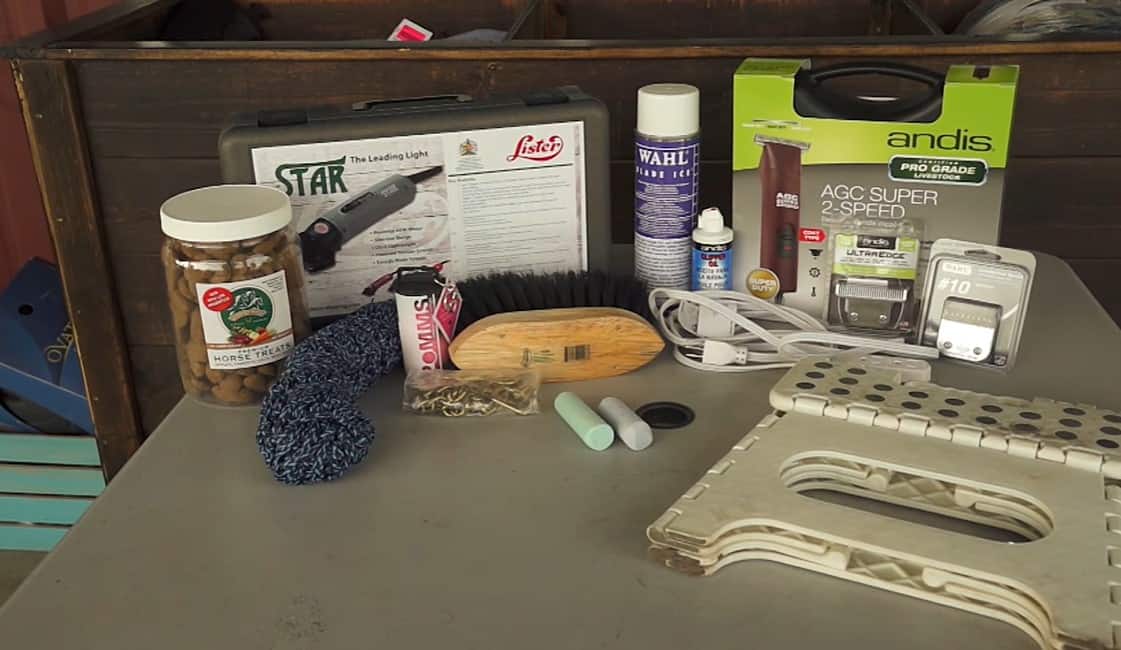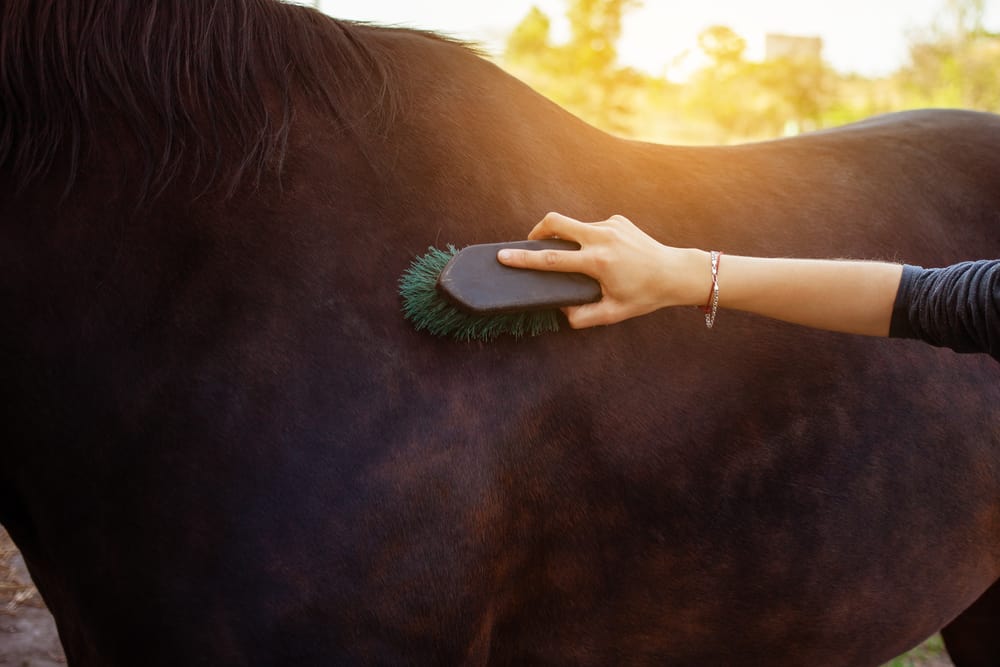Your horse care routine should entail body clipping when the time is right. This prevents overheating during winter, especially if the equine works a great deal at the time. It also promotes the horse’s health and minimizes the time you spend grooming it.
The first step of body clipping a horse is marking up the region you want to clip. Then, switch on your clippers and approach the animal slowly. Begin at its shoulders and proceed to the other areas, including the elbows. Once you are done, use a soft brush to get rid of any remaining loose hair.
Clipping your horse is easy, but it might be challenging for you if you’re a first-timer. What must you do before it? Which tools should you get for successful horse body clipping? In this post, we’ll guide you through this procedure to help you do it right if you don’t plan to hire a professional.
What is Horse Body Clipping?
As winter approaches, horses develop thick coats to keep them warm and protect them against wetness. Despite the perks that the massive hair growth offers, it has some downsides too. The horse sweats a lot if it works throughout the season, affecting its productivity. The thick coat is also difficult to dry, making the equine prone to chills and other dangerous health conditions.
Horse body clipping is the process of removing the animal’s thick coat to prevent these issues. Besides, taking care of clipped coats is effortless.
For most horses, the thick hair starts growing towards the end of August. Therefore, the perfect time to clip your horse is between September and October.
If your horse’s hair grows too fast, schedule another body clipping not later than the end of February. It’s not advisable to clip your horse past this time because it’ll affect the growth of the equine’s summer/spring coat.
Horse Body Clipping Styles
There are different types of body clips to consider for your horse. These include:
Strip Clip
If your horse only does light work, this is the ideal body clip for it. It covers the regions that sweat the most. A strip clip requires you to trim a strip of hair from the throatlatch, down the animal’s neck, chest and under its belly.
Blanket Clip
If you choose a blanket clip, leave hair on the horse’s legs, back, and hindquarters. The result should be something shaped like a quarter-sheet. This style is recommended for horses that indulge in medium work.
Trace Clip
A trace clip is convenient for equines that do light and medium work. This style removes hair from the neck, but not all of it.
Full-Body Clip
Full-body clips are recommended for horses involved in heavy tasks during winter. Here, you’ll clip the entire body, including the head, face, belly, legs, and saddle area.
Irish Clip
Horses that do light or medium work need the Irish clip, also known as the bib clip. It removes hair from the equine’s neck, underside, chest, and belly.
Hunter Clip
If you usually use your horse for medium and light tasks, this clip is also great for it. You’ll clip the whole body but leave hair on the legs and part of the saddle region.
What to Do Before Body Clipping a Horse
It’s prudent to prepare to clip your horse to ensure everything goes smoothly. How can you do that?
Buy Essential Body Clipping Tools
Before clipping your horse, go to the store and purchase the following tools:
- Clipper: You can purchase trimmers, multi-use clippers, or body clippers. Your choice depends on the clip style you want.
- Blades: Purchase several sets, clean them well and ensure they’re sharp.
- Chalk/tape/felt pen: To use when marking up where you want to clip.
- Blade oil: To lubricate your blades so that they function correctly throughout the process.
- Blade wash: To remove the hairs that might remain on the blades.
- Step stool: To help you reach areas such as the horse’s back, mane, and head.
- Toothbrush: For cleaning your blades, and the clipper’s interiors
- Soft brush: To remove loose hair once you’re done.
- Hay bag: Helps you distract your horse if you’re clipping it for the first time since it might be restless.
- Cooling spray: To lubricate and consequently cool down the blades. This should be done frequently.
- Chain: May come in handy when clipping the horse, but consult a veterinarian or expert before using it.
- Treats: To motivate and reward the horse for cooperating as the clipping process progresses.
Bathe or groom your equine
Take time to bathe or groom the horse well to eliminate all the grease or dirt on its coat. It could dull the blades and make it harder for you to clip the horse.
After washing the horse, dry it well afterward. A wet coat is challenging to clip, and it might take you more time than necessary to get the job done. It is best if you bathe the equine the day before clipping so there’s ample time for the hair to dry.
How to Body Clip a Horse (Step by Step)
- Once you have everything you require to safely and successfully clip your horse, begin. Use chalk to make up all the places you want to clip. The lines you make will depend on the type of body clip you intend to do.
- While standing a bit far away from your horse, turn your clippers on after thoroughly lubricating the blades. Then, start moving slowly towards it. If you’ve never clipped the horse before, repeatedly turn the equipment on and off. This is the best way to introduce the equine to the clippers’ sound and enable it to get used to it to facilitate smooth clipping.
- Start clipping the horse at its shoulders because it’s one of the least sensitive body parts. Use long strokes to attain the cleanest cuts. To avoid any lines, move against the hair growth direction.
- After you’re done with the shoulders, start clipping other parts of the equine’s body. Use your hand to pull the animal’s skin to tighten it. Avoid trimming the wrinkled areas since you may cut the horse’s skin.
- After clipping the entire marked-up area, use the soft brush-to-brush loose hair off the horse’s coat. If you don’t have a brush, use a soft piece of cloth or towel.
Valuable Horse Body Clipping Tips
Are you planning to clip your horse for the first time? Here are some practical tips we recommend.
- Learn proper horse clipping technique
This is the most critical part of clipping your horse. If you have no idea how to do it correctly, you may harm yourself and the equine. Remember that you’re not just learning to remove the horse’s thick coat. You’re also teaching yourself how to clip hard-to-reach parts such as the mane, face, and whorls.
- Pick the perfect time to clip your horse
The ideal time for horse body clipping is when winter is nearing, and your horse needs preparation for light, medium, or heavy work. Age is also worth considering. If your horse is older, don’t body clip it since it might find a hard time keeping itself warm during winter.
- Cover the equine with a cotton sheet if you remove too much hair
If you choose a full body clip, use a cotton sheet to cover your horse afterward. This keeps it warm. A soft rug is not advisable in this case because it’ll be full of clipped hair later, and it might be hard to clean.
- Take your time and be patient
Clipping is a time-consuming task that requires planning, effort, and skill. If you want everything to go well, take your time to prep, and be patient with the equine.
What to Avoid When Body Clipping A Horse
Here are the don’ts of horse body clipping:
- Wearing inappropriate gear
The last thing you need is to body clip your horse when you’re not dressed for the job. It could cause a lot of discomfort during and after the process. The recommended gear for horse body clipping is a quality plastic jumpsuit with cuffs, preferably made from elastic. This prevents hair from getting under your attire.
In addition, cover your head with a bandana; wear suitable glasses, a helmet, and steel-toed boots. Don’t wear any make-up.
- Doing it in a noisy, insecure environment
Choose a quiet, well-lit place to body clip your horse. A noisy environment may distract or scare your horse, causing it to act up during this process.
- Body clipping your horse alone
Even if you have years of experience in body clipping a horse, don’t do it alone. Have another person close by to help you out. They can calm the horse down if it becomes agitated. They can also pass the required tools to you and hold some of the areas you need to clip.
Conclusion
As you’ve seen above, it’s easy to body clip a horse. This process is essential because it helps your horse to do what is required of it during winter. It also makes the equine less susceptible to diseases.













I would like to clip my horse as you would a dog, going with the hair, rather than against the hair. Not such a close cut! Is this a good idea
Thank you for this article. I got more information than I wanted. I’ll give my horse a spa day, haha.